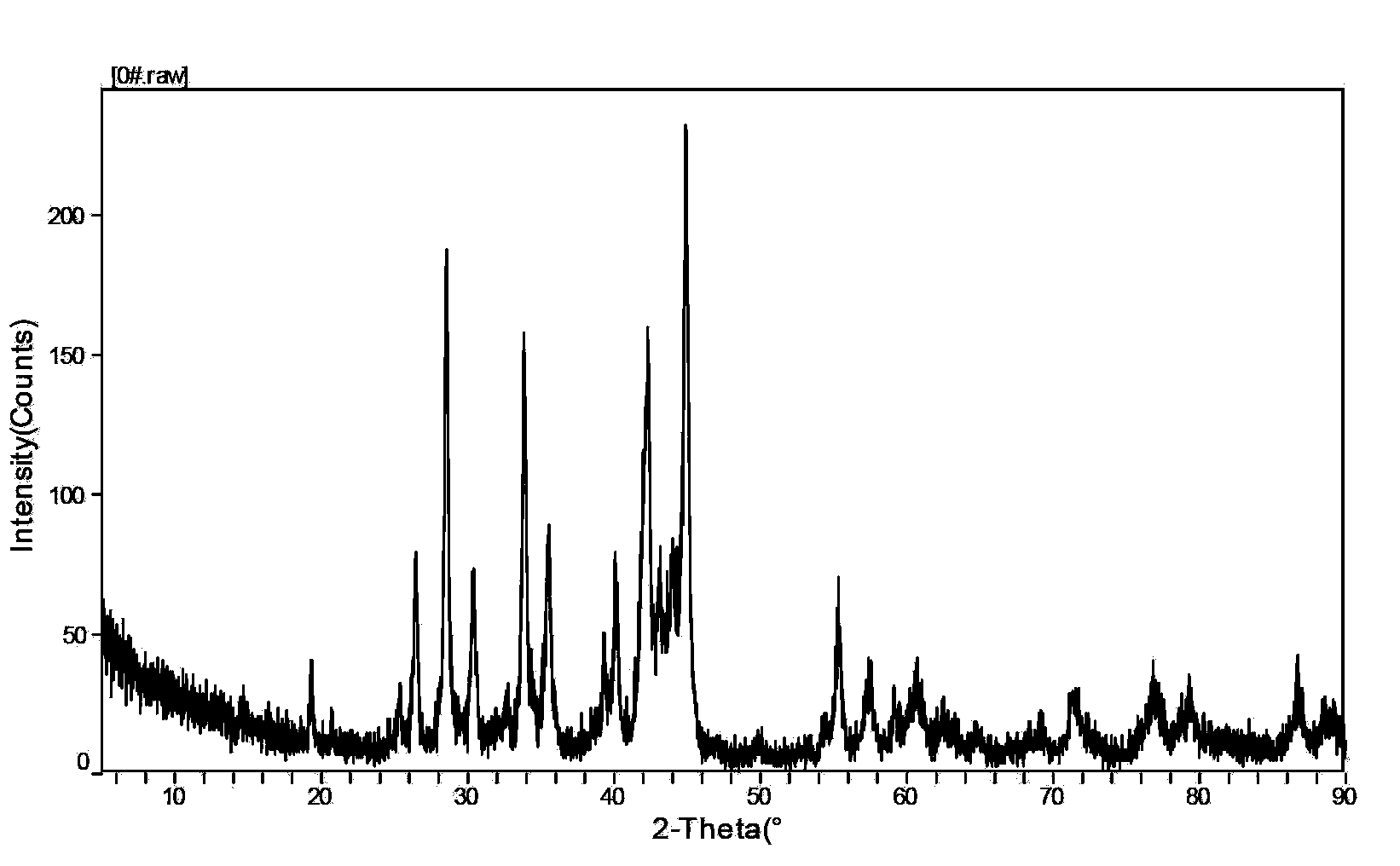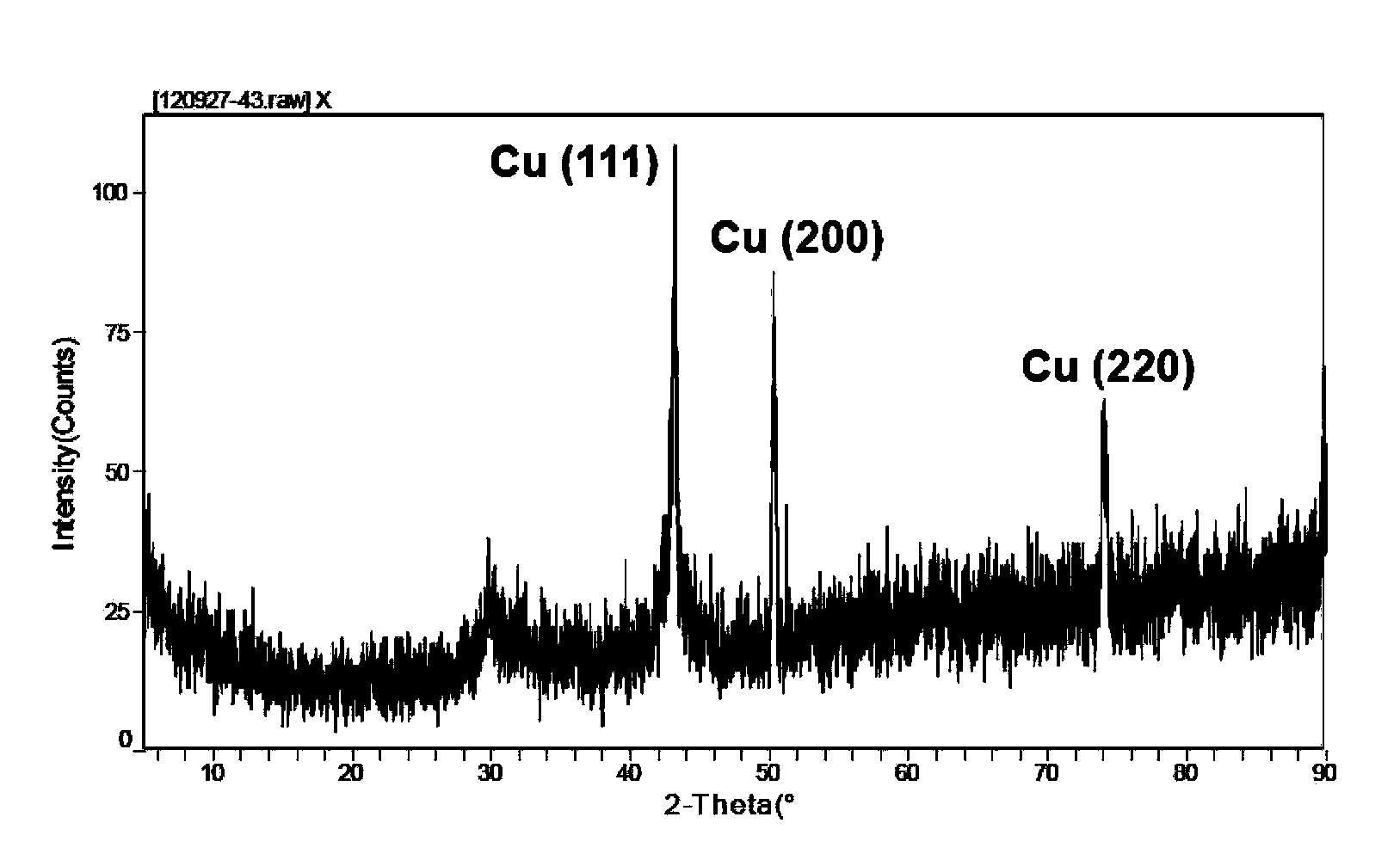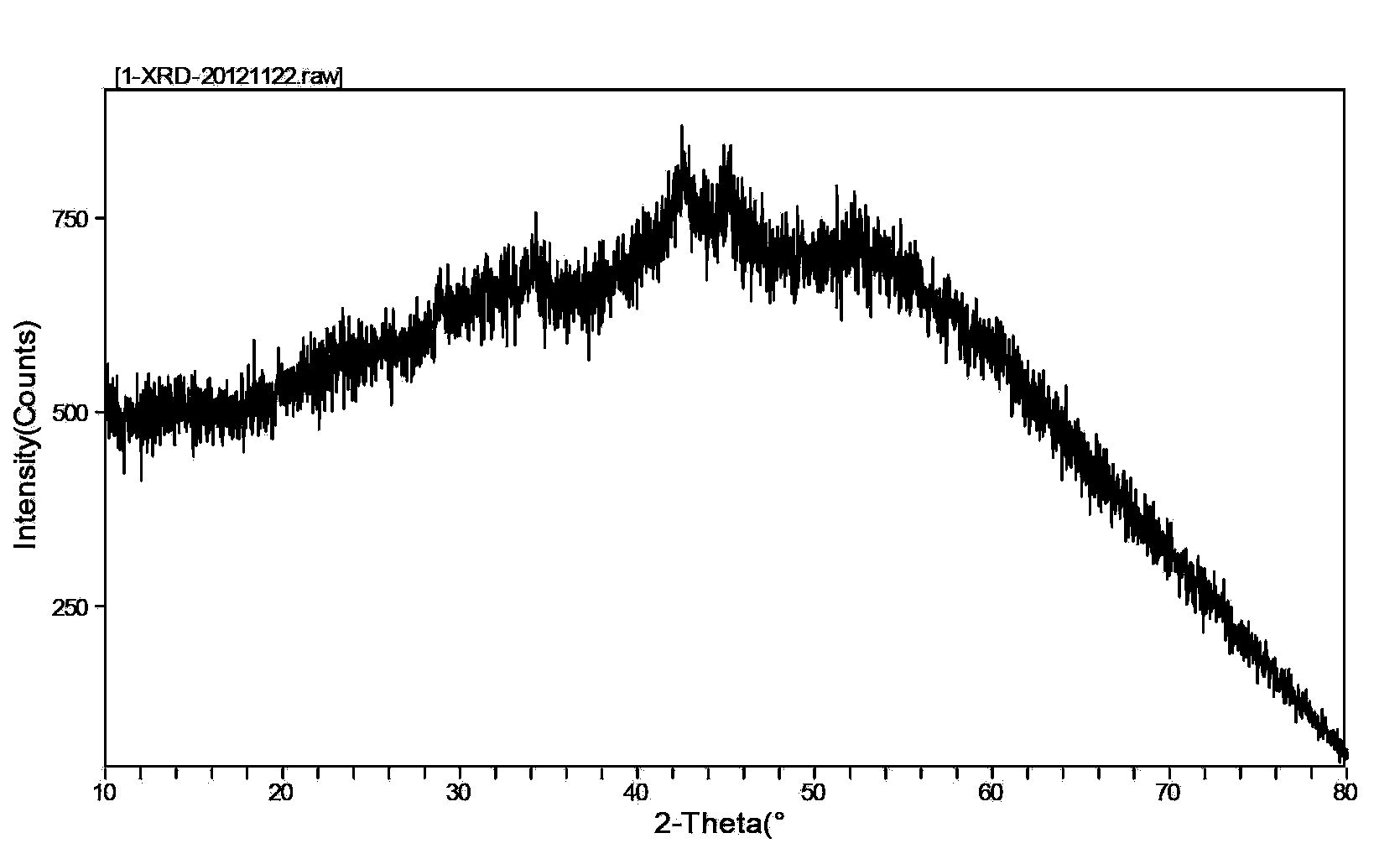Preparation method and application of high-capacity tin alloy sulfide negative electrode material suitable for industrialized mass production
A negative electrode material, tin alloy technology, applied in battery electrodes, electrical components, circuits, etc., can solve the problems of inability to produce lithium-ion battery capacity, increase the cost of battery use, and high price of cobalt elements, so as to improve negative electrode capacity and cycle Performance, increased capacity, and simple reaction conditions
- Summary
- Abstract
- Description
- Claims
- Application Information
AI Technical Summary
Problems solved by technology
Method used
Image
Examples
preparation example Construction
[0049] A preparation method suitable for industrialized mass production of a high-capacity tin alloy sulfide negative electrode material, comprising the following steps:
[0050] Mix tin (Sn) and other element (M) powders evenly, press into tablets, smelt in a vacuum high-frequency induction heating furnace to obtain a tin alloy ingot with uniform composition, crush the tin alloy ingot into tin alloy powder, and put it in a stirring ball mill Ball mill into amorphous tin alloy powder, then mix the tin alloy powder and sulfur source evenly, raise the temperature to 500 ~ 750 °C at a rate of 2 ~ 5 °C / min in a protective atmosphere or vacuum, and keep at this temperature for 0.5 ~ 2 hours, after the reaction, naturally cool to room temperature in a vacuum or protective gas atmosphere to obtain a high-capacity tin alloy sulfide anode material.
[0051] The other elements M are non-tin metal elements and / or non-metal elements. Preferably, the non-tin metal elements are cobalt (Co),...
Embodiment 1
[0062] Weigh tin powder and cobalt powder with a particle size of 200 mesh according to the mass percentage of 55:45, mix them evenly, press them into tablets, and then put them into the ZRS-0.1 vacuum melting casting belt furnace of Shanghai Mengting Instrument Equipment Co., Ltd., and vacuumize , through 99.9% argon protective gas, increase the current of the high-frequency induction coil to the eutectic melting of tin-cobalt alloy in the graphite crucible furnace, keep at this temperature for 60 seconds, so that the alloy is melted and mixed evenly, and then poured into the oxygen-free copper mold to quench and cool, and the Obtain silver-gray tin-cobalt alloy ingots. Break the tin-cobalt alloy ingot into small pieces, place it in a quartz test tube with a bottom diameter of 0.3 mm, and then place it in a high-frequency induction coil of a vacuum melting casting and casting belt furnace, and prepare a silver with a thickness of less than 10 microns by quenching an oxygen-fre...
Embodiment 2
[0064] The tin alloy reaction environment and conditions are the same as in Example 1.
[0065] The prepared alloy ingot was pulverized to below 200 mesh, placed in a stirring ball mill, and ball milled for 200 hours under the protection of argon to obtain black amorphous tin-cobalt alloy powder.
PUM
| Property | Measurement | Unit |
|---|---|---|
| diameter | aaaaa | aaaaa |
| diameter | aaaaa | aaaaa |
| thickness | aaaaa | aaaaa |
Abstract
Description
Claims
Application Information
 Login to View More
Login to View More - R&D
- Intellectual Property
- Life Sciences
- Materials
- Tech Scout
- Unparalleled Data Quality
- Higher Quality Content
- 60% Fewer Hallucinations
Browse by: Latest US Patents, China's latest patents, Technical Efficacy Thesaurus, Application Domain, Technology Topic, Popular Technical Reports.
© 2025 PatSnap. All rights reserved.Legal|Privacy policy|Modern Slavery Act Transparency Statement|Sitemap|About US| Contact US: help@patsnap.com



